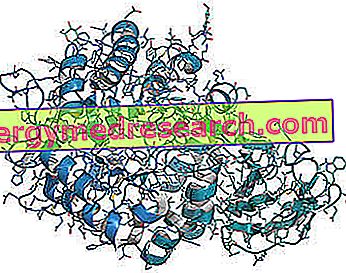
What is TRISENOX?
TRISENOX is a concentrate that is made up into a solution for infusion that contains arsenic trioxide (1 mg / ml) as the active ingredient.
What is TRISENOX used for?
TRISENOX is used to treat adult patients with acute promyelocytic leukemia - LPA (cancer of white blood cells). This pathology is caused by a genetic "translocation" (an exchange of genes between two chromosomes). The mutation affects the reproduction of white blood cells, which are no longer able to use retinoic acid (vitamin A). Patients with LPA are usually treated with retinoids (substances derived from vitamin A). TRISENOX is used when patients have not responded to treatment with retinoids and anticancer drugs, or in case of relapse after this type of treatment.
The medicine can only be obtained with a prescription.
How is TRISENOX used?
Treatment with TRISENOX should be under the supervision of a doctor experienced in treating patients with acute leukemia. TRISENOX is administered daily until symptoms of effective treatment are recorded (the bone marrow no longer contains any leukemic cells). If this improvement is not observed within fifty days of starting treatment, the administration should be suspended. The first treatment is subsequently consolidated, three or four weeks later, by administering TRISENOX once a day for five days, followed by two days of interruption, for five weeks. TRISENOX is given by intravenous infusion (drip into a vein), with a dose of 0.15 mg per kilogram of body weight for each type of patient. (children, adults and the elderly).
How does TRISENOX work?
The active ingredient in TRISENOX, arsenic trioxide, is a substance used in medicine for many years, including for the treatment of leukemia. The manner in which it acts on this condition has not yet been completely understood. It is believed that this substance prevents the production of DNA necessary for the growth of leukemia cells.
How has TRISENOX been studied?
TRISENOX has been studied in two clinical studies, on a total of 52 patients with LPA previously treated with anthracycline (an anticancer medicine) and with a retinoid. The first study has
concerned 12 patients, the second 40, and TRISENOX was not compared with other drugs in either of them. The main index to measure efficacy in clinical trials was the proportion of patients showing complete remission, with no tumor cell in the bone marrow and recovery of platelet and white blood cell levels in the blood.
What benefit has TRISENOX shown during the studies?
Looking at the results of the two aggregated studies, 45 (87%) of the 52 patients showed complete remission, obtained on average in 57 days.
What is the risk associated with TRISENOX?
The most common side effects (seen between 1 and 10 patients in 100) are neutropenia (lack of white blood cells), thrombocytopenia (platelet deficiency), hyperglycaemia (increased blood sugar), hypokalemia (lack of potassium in the blood), paresthesia (tingling and tingling), pleuritic pains (chest pain), dyspnoea (difficulty breathing), bone pain, arthralgia (joint pain), pyrexia (fever), fatigue, prolonged QT intervals on an electrocardiogram (irregular heartbeat), and increased levels of alanine aminotransferase and aspartate aminotransferase (liver enzymes). For the full list of all side effects reported with TRISENOX, see the Package Leaflet. TRISENOX should not be used in people who may be hypersensitive (allergic) to arsenic trioxide, or any of the other substances. Because arsenic trioxide can damage the heart, patients who are given TRISENOX should be closely monitored and have to have an electrocardiogram before and during treatment.
Why has TRISENOX been approved?
The Committee for Medicinal Products for Human Use (CHMP) considered that the benefits of TRISENOX outweigh the risks for induction and consolidation of remission in adult patients with relapsed / refractory acute promyelocytic leukemia (PLA) characterized by the presence of translocation t (15; 17) and / or of the PML / RAR-alpha gene. Previous treatment must have included retinoids and chemotherapy.
The Committee recommended that TRISENOX be given marketing authorization. TRISENOX has been authorized in "exceptional circumstances". This means that since the disease treated with this drug is rare, it has not been possible to obtain complete information on TRISENOX. The European Medicines Agency (EMEA) reviews the new information available every year and, if necessary, this summary is updated.
What information is still awaited for TRISENOX?
The TRISENOX pharmacy company will complete studies on the use of Trisenox on liver cancer patients and the use of the medicine together with retinoids and chemotherapy in the treatment of LPA.
More information on TRISENOX
On 5.3.2002 the European Commission issued a marketing authorization for TRISENOX, valid throughout the European Union. The authorization was renewed on 05.03.2007. The marketing authorization holder is Cephalon Europe ..
The full EPAR for TRISENOX can be found here.
Last update of this summary: July 2007



